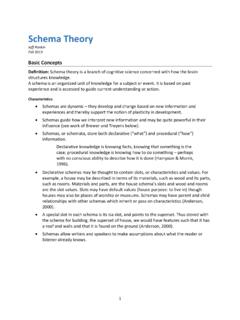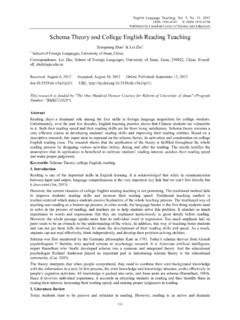Transcription of Roofline: An Insightful Visual Performance Model for …
1 *To appear in Communications of the ACM April 2008. Revised August and October 2008. roofline : An Insightful Visual Performance Model for Floating-Point Programs and Multicore Architectures*Samuel Williams, Andrew Waterman, and David Patterson Parallel Computing Laboratory, 565 Soda Hall, Berkeley, Berkeley, CA 94720-1776, 510-642-6587 samw, waterman, We propose an easy-to-understand, Visual Performance Model that offers insights to programmers and architects on improving parallel software and hardware for floating point computations. 1. INTRODUCTION Conventional wisdom in computer architecture led to homogeneous designs. Nearly every desktop and server computer uses caches, pipelining, superscalar instruction issue, and out-of-order execution. Although the instruction sets varied, the microprocessors were all from the same school of design. The switch to multicore means that microprocessors will become more diverse, since there is no conventional wisdom yet for them.
2 For example, some offer many simple processors versus fewer complex processors, some depend on multithreading, and some even replace caches with explicitly addressed local stores. Manufacturers will likely offer multiple products with differing number of cores to cover multiple price- Performance points, since the cores per chip will likely double every two years [4]. While diversity may be understandable in this time of uncertainty, it exacerbates the already difficult job of programmers, compiler writers, and even architects. Hence, an easy-to-understand Model that offers Performance guidelines could be especially valuable. A Model need not be perfect, just Insightful . For example, the 3Cs Model for caches is an analogy [19]. It is not a perfect Model , since it ignores potentially important factors like block size, block allocation policy, and block replacement policy. Moreover, it has quirks. For example, a miss can be labeled capacity in one design and conflict in another cache of the same size.
3 Yet, the 3Cs Model has been popular for nearly 20 years because it offers insights into the behavior of programs, helping programmers, compiler writers, and architects improve their respective designs. This paper proposes such a Model and demonstrates it on four diverse multicore computers using four key floating-point kernels. 2. Performance MODELS Stochastic analytical models [14][28] and statistical Performance models [7][27] can predict program Performance on multiprocessors accurately. However, they rarely provide insights into how to improve Performance of programs, compilers, or computers [1] or they can be hard to use by non-experts [27]. An alternative, simpler approach is bound and bottleneck analysis. Instead of trying to predict Performance , it provides [20] valuable insight into the primary factors affecting the Performance of computer systems. In particular, the critical influence of the system bottleneck is highlighted and quantified.
4 The best-known example is surely Amdahl s Law [3], which states simply that the Performance gain of a parallel computer is limited by the serial portion of a parallel program. It has been recently applied to heterogeneous multicore computers [4][18]. 3. THE roofline Model We believe that for the recent past and foreseeable future, off-chip memory bandwidth will often be the constraining resource[23]. Hence, we want a Model that relates processor Performance to off-chip memory traffic. Towards that goal, we use the term operational intensity to mean operations per byte of DRAM traffic. We define total bytes accessed as those that go to the main memory after they have been filtered by the cache hierarchy. That is, we measure traffic between the caches and memory rather than between the processor and the caches. Thus, operational intensity suggests the DRAM bandwidth needed by a kernel on a particular computer.
5 We use operational intensity instead of the terms arithmetic intensity [16] or machine balance [8][11] for two reasons. First, arithmetic intensity and machine balance measure traffic between the processor and cache, whereas we want to measure traffic between the caches and DRAM. This subtle change allows us to include memory optimizations of a computer into our bound and bottleneck Model . Second, we think the Model will work with kernels where the operations are not arithmetic (see Section 7), so we needed a more general term than arithmetic. The proposed Model ties together floating-point Performance , operational intensity, and memory Performance together in a two-dimensional graph. Peak floating-point Performance can be found using the hardware specifications or microbenchmarks. The working sets of the kernels we consider here do not fit fully in on-chip caches, so peak memory Performance is defined by the memory system behind the caches.
6 Although you can find memory Performance with the STREAM benchmark [22], for this work we wrote a series of progressively optimized microbenchmarks designed to determine sustainable DRAM bandwidth. They include all techniques to get the best memory Performance , including prefetching and data alignment. (Section in the Appendix gives a more details of how to measure processor and memory Performance and operational intensity.)1 Figure 1a shows the Model for a GHz AMD Opteron X2 Model 2214 in a dual socket system. The graph is on a log-log scale. The Y-axis is attainable floating-point Performance . The X-axis is operational intensity, varying from 1/4 Flops/DRAM byte accessed to 16 Flops/DRAM byte accessed. The system being 1 Appendix A of this paper is on the CACM web site. 2 modeled has a peak double precision floating-point Performance of GFlops/sec and a peak memory bandwidth of 15 GBytes/sec from our benchmark.
7 This latter measure is the steady state bandwidth potential of the memory in a computer, not the pin bandwidth of the DRAM chips. We can plot a horizontal line showing peak floating-point Performance of the computer. Obviously, the actual floating-point Performance of a floating-point kernel can be no higher than the horizontal line, since that is a hardware limit. How could we plot the peak memory Performance ? Since X-axis is GFlops per byte and the Y-axis is GFlops per second, bytes per second which equals (GFlops/second)/(GFlops/byte) is just a line at a 45-degree angle in this figure. Hence, we can plot a second line that gives the maximum floating-point Performance that the memory system of that computer can support for a given operational intensity. This formula drives the two Performance limits in the graph in Figure 1a: Attainable GFlops/sec = Min(Peak Floating Point Performance , Peak memory Bandwidth x Operational Intensity) These two lines intersect at the point of peak computational Performance and peak memory bandwidth.
8 Note that these limits are created once per multicore computer, not once per kernel. For a given kernel, we can find a point on the X-axis based on its operational intensity. If we draw a (pink dashed) vertical line through that point, the Performance of the kernel on that computer must lie somewhere along that line. The horizontal and diagonal lines give this bound Model its name. The roofline sets an upper bound on Performance of a kernel depending on its operational intensity. If we think of operational intensity as a column that hits the roof, either it hits the flat part of the roof, which means Performance is compute bound, or it hits the slanted part of the roof, which means Performance is ultimately memory bound. In Figure 1a, a kernel with operational intensity 2 is compute bound and a kernel with operational intensity 1 is memory bound. Given a roofline , you can use it repeatedly on different kernels, since the roofline doesn t vary.
9 Note that the ridge point, where the diagonal and horizontal roofs meet, offers an insight into the overall Performance of the computer. The x-coordinate of the ridge point is the minimum operational intensity required to achieve maximum Performance . If the ridge point is far to the right, then only kernels with very high operational intensity can achieve the maximum Performance of that computer. If it is far to the left, then almost any kernel can potentially hit the maximum Performance . As we shall see (Section ), the ridge point suggests the level of difficulty for programmers and compiler writers to achieve peak Performance . To illustrate, let s compare the Opteron X2 with two cores in Figure 1a to its successor, the Opteron X4 with four cores. To simplify board design, they share the same socket. Hence, they have the same DRAM channels and can thus have the same peak memory bandwidth, although the prefetching is better in the X4.
10 In addition to doubling the number of cores, the X4 also has twice the peak floating-point Performance per core: X4 cores can issue two floating-point SSE2 instructions per clock cycle while X2 cores can issue two every other clock. As the clock rate is slightly faster GHz for X2 versus GHz for X4 the X4 has slightly more than four times the peak floating-point Performance of the X2 with the same memory bandwidth. Figure 1b compares the roofline models for both systems. As expected, the ridge point shifts right from in the Opteron X2 to in the Opteron X4. Hence, to see a Performance gain in the X4, kernels need an operational intensity higher than 1. Figure 1. roofline Model for (a) AMD Opteron X2 on left and (b) Opteron X2 vs. Opteron X4 on right. 4. ADDING CEILINGS TO THE Model The roofline Model gives an upper bound to Performance . Suppose your program is performing far below its roofline .
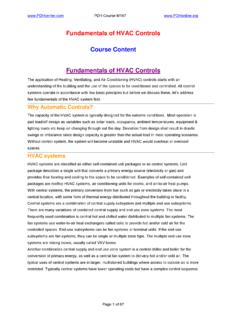
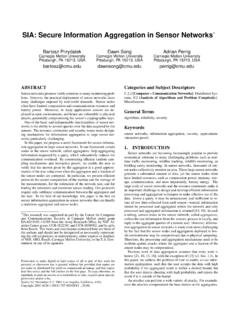
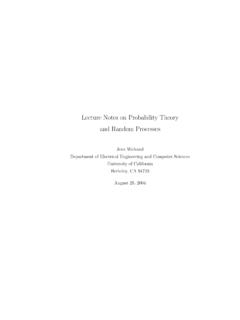
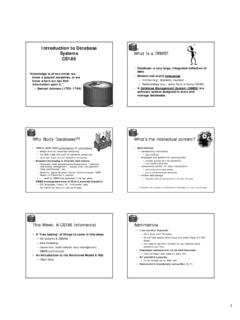
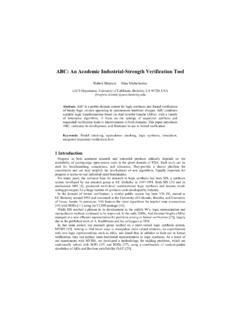
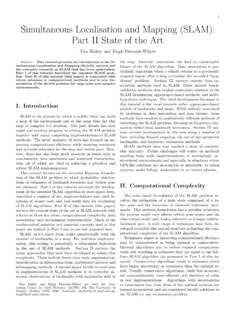
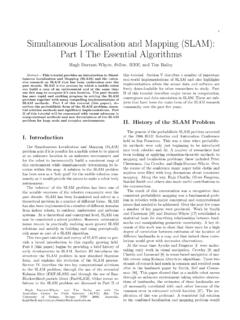
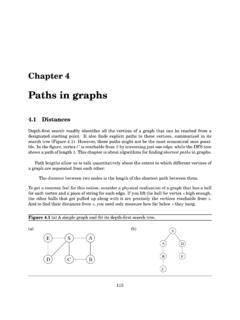
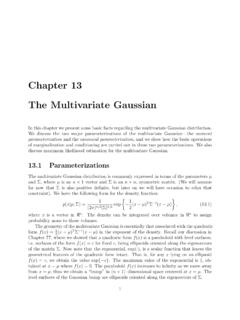
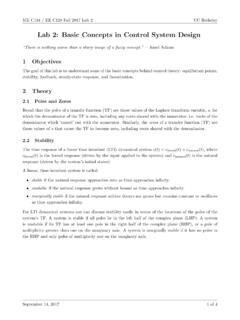
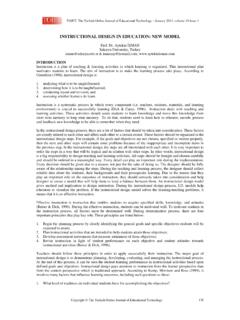
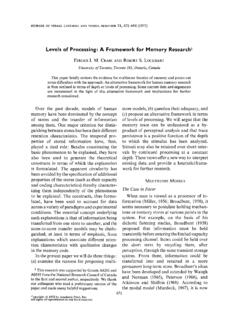
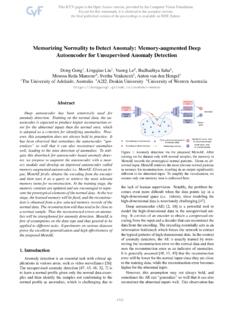
![arXiv:1402.1128v1 [cs.NE] 5 Feb 2014](/cache/preview/f/d/1/e/b/f/3/0/thumb-fd1ebf3035d443b1c7cdc82011fc710a.jpg)
